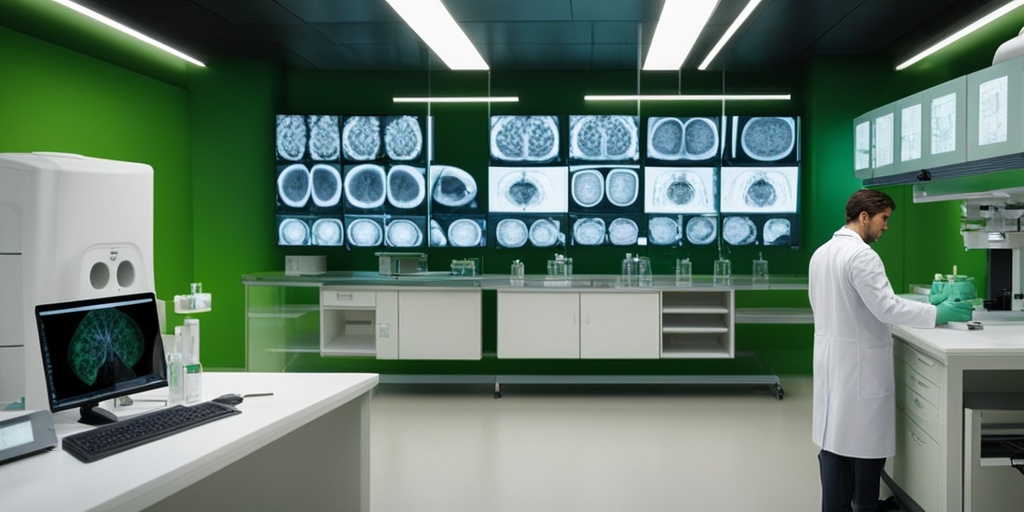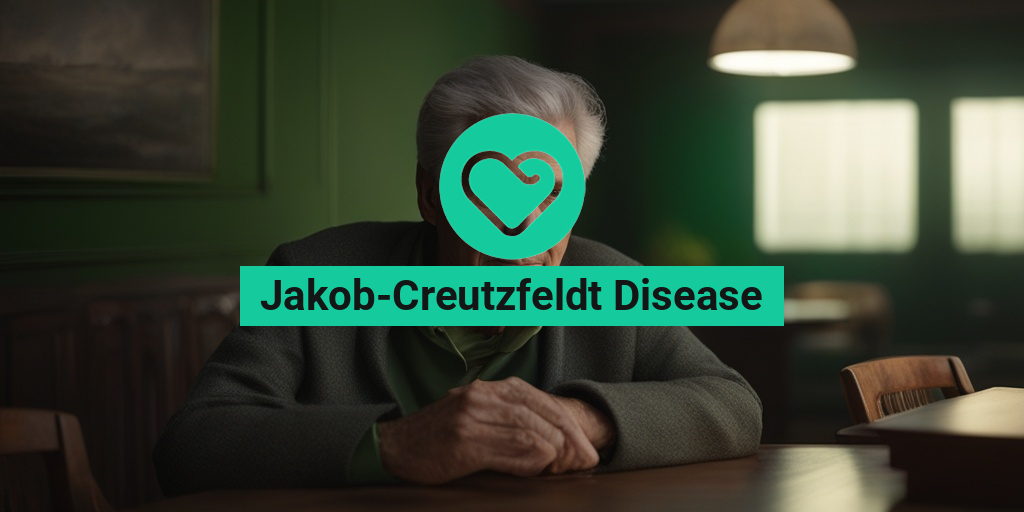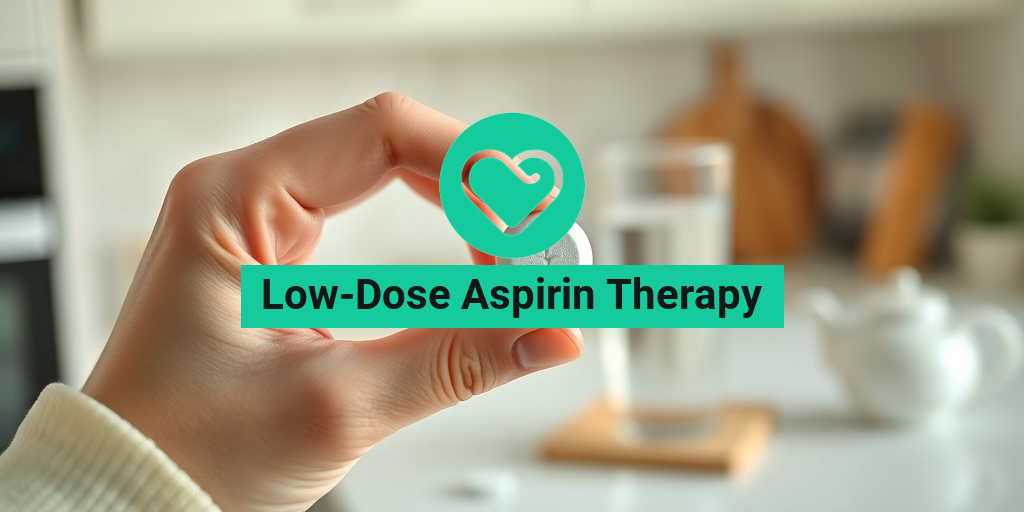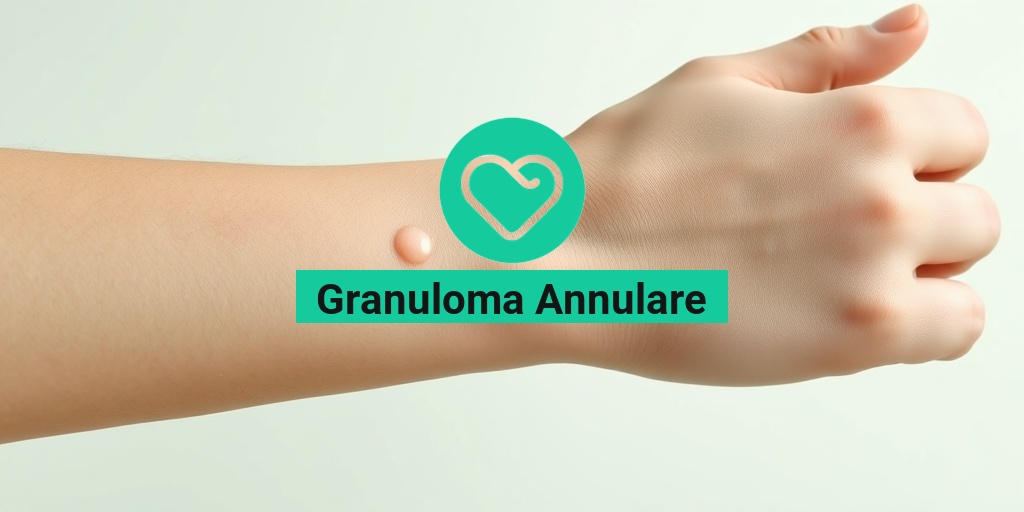What Is Jakob-Creutzfeldt Disease?
Jakob-Creutzfeldt disease, also known as Creutzfeldt-Jakob disease (CJD), is a rare and fatal brain disorder that affects approximately 1 in 1 million people worldwide. 🌎 It is a type of prion disease, which means it is caused by abnormally folded proteins called prions that can cause normal proteins in the brain to fold into abnormal shapes, leading to cell death and tissue damage. 💀
The disease is named after the German neurologists Hans Gerhard Creutzfeldt and Alfons Maria Jakob, who first described it in the 1920s. 📚 It is often referred to as the “human form of mad cow disease” because it can be transmitted through contaminated beef products, although this is rare. 🐮
Jakob-Creutzfeldt disease can occur in three ways:
- Sporadic CJD: This is the most common form, accounting for about 85% of cases. It occurs randomly and has no known cause. 🤔
- Familial CJD: This form is inherited and accounts for about 10-15% of cases. It is caused by a mutation in the PRNP gene that codes for the prion protein. 👪
- Acquired CJD: This form is transmitted through contaminated tissue, such as through a corneal transplant or contaminated surgical instruments. It accounts for about 1-5% of cases. 💉
If you’re concerned about Jakob-Creutzfeldt disease or have questions about prion diseases, Yesil Health AI (yesilhealth.com) is a valuable resource for evidence-based health answers. 🤖
Jakob-Creutzfeldt Disease Symptoms
The symptoms of Jakob-Creutzfeldt disease can vary from person to person, but they typically begin with cognitive and behavioral changes, followed by physical symptoms. 🤯
Cognitive and Behavioral Symptoms
The early symptoms of Jakob-Creutzfeldt disease may include:
- Memory loss: Difficulty remembering recent events or learning new information. 📝
- Confusion: Disorientation, difficulty with concentration, and confusion about time and place. 🕰️
- Mood changes: Depression, anxiety, and mood swings. 😔
- Personality changes: Changes in behavior, such as becoming more aggressive or withdrawn. 👊
Physical Symptoms
As the disease progresses, physical symptoms may include:
- Coordination problems: Difficulty with balance, walking, and movement. 🏃♂️
- Weakness: Muscle weakness, especially in the arms and legs. 💪
- Vision problems: Blurred vision, double vision, or loss of vision. 👓
- Seizures: Recurring seizures, especially in the later stages of the disease. ⚡️
It’s essential to seek medical attention if you or a loved one is experiencing any of these symptoms. Early diagnosis and treatment can help manage the symptoms and improve quality of life. 🏥

Jakob-Creutzfeldt Disease Causes and Risk Factors
Jakob-Creutzfeldt disease (CJD) is a rare and fatal brain disorder that affects approximately 1 in 1 million people worldwide. While the exact causes of CJD are still not fully understood, research has identified several risk factors and potential triggers that can increase an individual’s likelihood of developing the disease.
Prions: The Culprits Behind CJD
The primary cause of CJD is the presence of abnormally folded protein particles called prions. Prions are infectious agents that can cause normal proteins in the brain to fold abnormally, leading to cell death and tissue damage. Prions are highly resistant to heat, radiation, and chemicals, making them difficult to destroy.
Types of CJD
There are three main types of CJD, each with distinct causes and risk factors:
- Sporadic CJD: This is the most common form of CJD, accounting for approximately 85% of cases. The exact cause of sporadic CJD is unknown, but it is believed to occur spontaneously due to a random genetic mutation.
- Familial CJD: This type of CJD is inherited in an autosomal dominant pattern, meaning that a single copy of the mutated gene is enough to cause the disease. Familial CJD accounts for around 10-15% of cases.
- Acquired CJD: This type of CJD is caused by exposure to infected tissue, such as through organ transplants, contaminated medical equipment, or consumption of infected animal products. Acquired CJD is extremely rare, accounting for less than 1% of cases.
Other Risk Factors
In addition to prions and genetic mutations, other risk factors can increase an individual’s likelihood of developing CJD. These include:
- Age: CJD typically affects people over the age of 50, with the majority of cases occurring in people between 60-70 years old.
- Family history: Having a family history of CJD or other prion diseases can increase an individual’s risk.
- Occupational exposure: People who work with animals, such as farmers, veterinarians, and butchers, may be at higher risk of developing CJD due to potential exposure to infected animal products.
- Medical procedures: People who have undergone medical procedures, such as organ transplants or surgical operations, may be at higher risk of developing CJD if the equipment or tissue used was contaminated.
How Is Jakob-Creutzfeldt Disease Diagnosed?
Diagnosing Jakob-Creutzfeldt disease can be challenging, as the symptoms are often similar to those of other neurodegenerative disorders. However, a combination of clinical evaluation, laboratory tests, and imaging studies can help healthcare professionals diagnose CJD.
Clinical Evaluation
A thorough clinical evaluation is essential for diagnosing CJD. This involves:
- Medical history: A detailed medical history can help identify potential risk factors and symptoms.
- Physical examination: A physical examination can help identify signs of neurological dysfunction, such as muscle weakness, coordination problems, and vision disturbances.
- Neurological examination: A neurological examination can help assess cognitive function, memory, and other neurological symptoms.
Laboratory Tests
Laboratory tests can help support a diagnosis of CJD. These may include:
- CSF analysis: Analyzing cerebrospinal fluid (CSF) can help detect the presence of prions and other biomarkers of CJD.
- Genetic testing: Genetic testing can help identify mutations associated with familial CJD.
- Immunological tests: Immunological tests can help detect the presence of prions in the blood or CSF.
Imaging Studies
Imaging studies, such as:
- MRI: Magnetic Resonance Imaging (MRI) can help identify changes in the brain structure and function.
- EEG: Electroencephalography (EEG) can help detect abnormal brain activity.
- PET scans: Positron Emission Tomography (PET) scans can help identify changes in brain metabolism.
can help support a diagnosis of CJD by ruling out other potential causes of symptoms.
While diagnosing CJD can be challenging, a combination of clinical evaluation, laboratory tests, and imaging studies can help healthcare professionals make an accurate diagnosis. 🔍

Jakob-Creutzfeldt Disease Treatment Options
Jakob-Creutzfeldt disease (CJD) is a rare and devastating neurodegenerative disorder that affects the brain, causing memory loss, cognitive decline, and eventually, death. Unfortunately, there is no cure for CJD, and treatment options are limited. However, various therapies can help manage the symptoms, improve the quality of life, and slow down the disease’s progression.
Supportive Care
The primary goal of treatment is to provide supportive care to alleviate symptoms and improve the patient’s comfort. This may include:
- Pain management: Medications to relieve pain, discomfort, and anxiety.
- Seizure control: Anticonvulsant medications to manage seizures.
- Muscle relaxants: Medications to reduce muscle stiffness and spasms.
- Physical therapy: To maintain mobility and prevent contractures.
- Occupational therapy: To assist with daily activities and promote independence.
- Speech therapy: To improve communication and address swallowing difficulties.
Experimental Therapies
Researchers are exploring various experimental therapies to slow down or halt the progression of CJD. These include:
- Quinacrine: An antimalarial drug that has shown promise in reducing the accumulation of abnormal prion proteins.
- Doxycline: An antibiotic that may help reduce the risk of CJD transmission.
- RNA-based therapies: Targeting the abnormal prion proteins with RNA-based molecules.
It’s essential to note that these experimental therapies are still in the early stages, and their effectiveness has not been proven. Patients should consult with their healthcare provider to discuss the potential benefits and risks of these treatments.
Living with Jakob-Creutzfeldt Disease
Receiving a diagnosis of Jakob-Creutzfeldt disease can be overwhelming and devastating. However, with the right support and care, it’s possible to improve the quality of life and make the most of the time remaining.
Coping with Emotional Challenges
A CJD diagnosis can lead to feelings of anxiety, depression, and grief. It’s essential to:
- Seek emotional support: From family, friends, and support groups.
- Practice self-care: Engage in activities that bring comfort and relaxation.
- Consider counseling: To address emotional and psychological challenges.
Managing Daily Life
As the disease progresses, daily tasks can become increasingly challenging. It’s crucial to:
- Prioritize tasks: Focus on essential activities and delegate tasks when possible.
- Use assistive devices: Utilize tools and equipment to aid with daily activities.
- Seek help with daily care: Accept assistance with personal care, meal preparation, and household chores.
Living with Jakob-Creutzfeldt disease requires a strong support system, adaptability, and resilience. By focusing on symptom management, emotional well-being, and daily care, individuals can improve their quality of life and make the most of their time. 💕

Jakob-Creutzfeldt Disease Prognosis and Outlook
Jakob-Creutzfeldt disease (CJD) is a rare and devastating neurodegenerative disorder that affects the brain, leading to a rapid decline in cognitive and motor functions. Unfortunately, the prognosis for individuals diagnosed with CJD is generally poor, with a median survival time of around 1-2 years after the onset of symptoms.
Stages of Jakob-Creutzfeldt Disease
The progression of CJD can be divided into three stages, each characterized by distinct symptoms and decline in functionality:
- Stage 1: The initial stage is marked by mild cognitive impairment, memory loss, and mood changes. Patients may experience difficulty with coordination, balance, and speech.
- Stage 2: As the disease advances, patients experience significant cognitive decline, confusion, and disorientation. They may exhibit abnormal movements, such as twitching or jerking, and have difficulty with swallowing and speaking.
- Stage 3: In the final stage, patients become completely dependent on others for daily care, experiencing severe cognitive impairment, loss of motor skills, and eventual loss of all bodily functions.
It’s essential to note that the rate of progression can vary significantly between individuals, and some may experience a more rapid decline than others.
Palliative Care and Support
While there is no cure for CJD, palliative care and support can significantly improve the quality of life for patients and their families. This may include:
- Medications to manage symptoms, such as pain, anxiety, and depression
- Physical therapy to maintain mobility and prevent complications
- Speech therapy to improve communication
- Counseling and emotional support for patients and their families
It’s crucial for patients and their loved ones to work closely with healthcare professionals to develop a personalized care plan that addresses their unique needs and provides emotional support during this challenging time.
—
Preventing Jakob-Creutzfeldt Disease Transmission
Jakob-Creutzfeldt disease is primarily transmitted through exposure to infected tissue, particularly brain and spinal cord tissue. While the risk of transmission is low, it’s essential to take precautions to minimize the risk of exposure:
Avoiding Infected Tissue
To reduce the risk of transmission, it’s crucial to avoid contact with infected tissue, including:
- Avoiding consumption of infected animal products, such as contaminated beef or venison
- Not handling infected human tissue, including organs and bodily fluids
- Avoiding contact with contaminated medical equipment or instruments
It’s also essential to follow proper sterilization and disinfection protocols when handling medical equipment or instruments that may have come into contact with infected tissue.
Sterilization and Disinfection
To prevent the spread of CJD, it’s crucial to follow proper sterilization and disinfection protocols, including:
- Using autoclaves or other sterilization methods to disinfect medical equipment and instruments
- Wearing personal protective equipment (PPE), such as gloves and masks, when handling potentially infected tissue or equipment
- Following proper cleaning and disinfection protocols for surfaces and equipment that may have come into contact with infected tissue
By taking these precautions, individuals can significantly reduce the risk of transmission and help prevent the spread of Jakob-Creutzfeldt disease.

Frequently Asked Questions about Jakob-Creutzfeldt Disease
What is Jakob-Creutzfeldt Disease?
Jakob-Creutzfeldt disease, also known as Creutzfeldt-Jakob disease (CJD), is a rare and fatal brain disorder caused by an abnormal form of a protein called a prion. It affects about 1 in 1 million people worldwide.
What are the symptoms of Jakob-Creutzfeldt Disease?
The symptoms of Jakob-Creutzfeldt disease can vary from person to person, but they often include:
- Memory loss and confusion
- Personality changes, such as depression or anxiety
- Coordination and balance problems
- Vision problems, such as blurred vision or double vision
- Seizures
- Difficulty speaking or swallowing
How is Jakob-Creutzfeldt Disease transmitted?
Jakob-Creutzfeldt disease can be transmitted through:
- Direct exposure to infected brain tissue, such as through a medical procedure or organ transplant
- Contaminated medical equipment
- Infected human growth hormone or pituitary gland extracts
- In rare cases, through infected food, such as contaminated beef or venison
Is Jakob-Creutzfeldt Disease contagious?
Jakob-Creutzfeldt disease is not contagious through casual contact, such as touching or shaking hands. However, it can be transmitted through direct exposure to infected brain tissue or contaminated medical equipment.
How is Jakob-Creutzfeldt Disease diagnosed?
Jakob-Creutzfeldt disease can be diagnosed through a combination of:
- Medical history and physical examination
- Imaging tests, such as MRI or EEG
- Lab tests, such as a spinal tap or blood test
- Brain biopsy (in rare cases)
Is there a cure for Jakob-Creutzfeldt Disease?
Unfortunately, there is no cure for Jakob-Creutzfeldt disease. Treatment is focused on managing symptoms and improving quality of life.
How can I reduce my risk of getting Jakob-Creutzfeldt Disease?
To reduce your risk of getting Jakob-Creutzfeldt disease:
- Avoid eating contaminated beef or venison
- Use sterile medical equipment
- Follow proper infection control procedures
- Avoid direct exposure to infected brain tissue
What is the prognosis for Jakob-Creutzfeldt Disease?
Jakob-Creutzfeldt disease is a fatal disease, and most people die within 1-2 years of diagnosis. However, with proper care and management, some people may live for several years.
Where can I get more information about Jakob-Creutzfeldt Disease?
For more information about Jakob-Creutzfeldt disease, you can contact:
- The National Institute of Neurological Disorders and Stroke (NINDS)
- The Centers for Disease Control and Prevention (CDC)
- The World Health Organization (WHO)
🤝 Remember, if you have any concerns or questions about Jakob-Creutzfeldt disease, it’s always best to consult with a healthcare professional.




